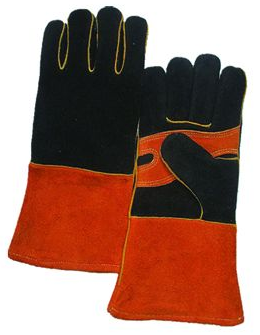Welding is a dangerous job, and it's important to protect yourself from the hazards that come with it. One of the most critical pieces of equipment for any welder is a pair of welding gloves. The right pair of gloves will not only protect your hands from heat and sparks but also give you the dexterity and control you need to complete your work accurately.
Here are some factors to consider when choosing welding gloves:
Material
Welding gloves are made from a variety of materials, including leather, cowhide, pigskin, and goat skin. Leather is the most common material used in welding gloves because it is durable, heat-resistant, and provides good protection against sparks and slag.
Cowhide is another popular material because it is thicker and more durable than other types of leather. Pigskin is a cheaper option that is still durable and provides good protection against heat and sparks. Goat skin is a softer and more flexible material that provides good dexterity and control.
Thickness
The thickness of the gloves is an important factor to consider because it determines the level of protection the gloves provide. Thicker gloves are more durable and provide better protection against heat and sparks, but they also reduce dexterity and control. Thinner gloves, on the other hand, provide better dexterity and control but offer less protection against heat and sparks.

Length
The length of the gloves is also an important factor to consider because it determines the level of protection the gloves provide. Gloves that extend past the wrist offer better protection against heat and sparks than gloves that only cover the hand.
Stitching
The stitching on welding gloves should be strong and durable to ensure that the gloves hold up under the stresses of welding. Look for gloves with reinforced stitching and double-stitching in high-stress areas like the palm and fingers.
Lining
Some welding gloves come with a lining that provides additional comfort and protection. Lined gloves are typically more expensive than unlined gloves, but they offer better heat resistance and insulation.
Cuff Closure
The cuff closure is the mechanism that secures the gloves to your wrist. Some gloves have elastic cuffs that slip over your wrist, while others have adjustable cuffs that can be tightened with a strap or buckle. The cuff closure should be secure enough to keep the gloves in place while you work but also easy to remove in case of an emergency.
Size
It's important to choose gloves that fit your hands properly to ensure that you have the dexterity and control you need to complete your work accurately. Gloves that are too small can be uncomfortable and restrict movement, while gloves that are too large can slip off or get in the way.
To find the right size, measure your hand around the widest part of your palm, excluding your thumb. Use this measurement to determine your glove size based on the manufacturer's sizing chart.
Brand and Price
Finally, consider the brand and price of the gloves you're considering. There are many different brands of welding gloves on the market, each with their own strengths and weaknesses. Do some research to find a brand that is reputable and has good reviews from other welders.
Price is also a consideration, but it should not be the only factor you consider. While it may be tempting to choose the cheapest gloves available, investing in a high-quality pair of gloves can save you money in the long run by providing better protection and lasting longer.
In conclusion, choosing the right welding gloves is essential for protecting yourself from the hazards of welding. Consider the material, thickness, length, stitching, lining, cuff closure, size, brand, and price when choosing welding gloves to ensure that you get the best protection and performance possible.






